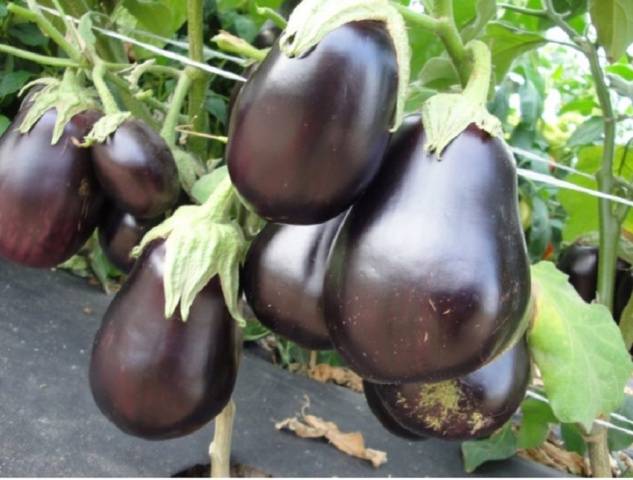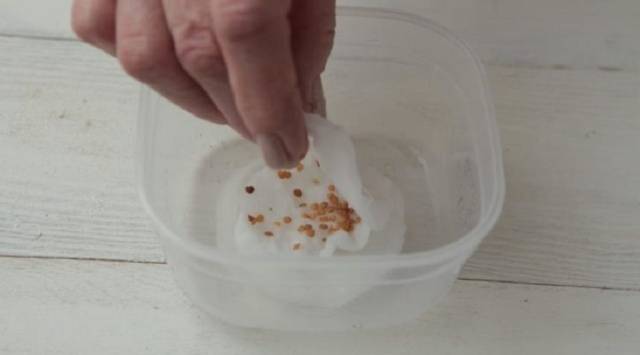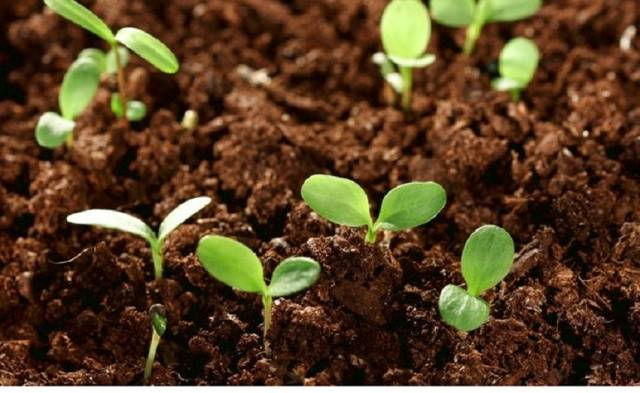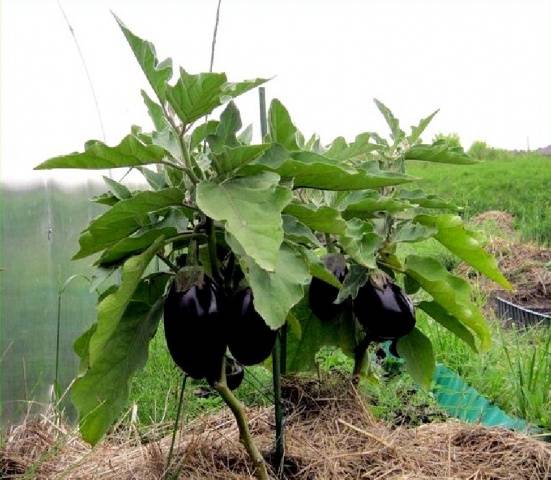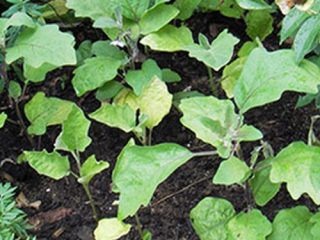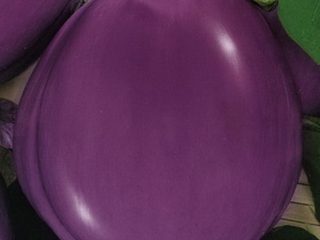Content
Eggplants have long been included in the list of the most popular crops for growing in summer cottages. If ten years ago it was very easy to choose a variety, now it is more problematic. Breeders are constantly offering vegetable growers new, improved hybrids and varieties of eggplant, which bear fruit perfectly even in the Northern regions.
Eggplant "Nutcracker F1" is worthy of the attention of gardeners. In a very short time, the hybrid gained popularity due to its characteristics. Let's consider the features of growing eggplant seedlings "Nutcracker F1", as well as the agrotechnical requirements of the plant. To do this, let's get acquainted with the description of the variety and the photo of eggplant "Nutcracker F1"
Description and characteristics
For eggplants, summer residents have their own requirements. The variety needs a high-yielding and versatile use. Both beneficial characteristics are fully expressed in the F1 Nutcracker hybrid, which explains its popularity. After all, the culture cannot be called completely unpretentious. If you grow eggplants from seeds yourself, you will have to spend more time and effort. To get to know the hybrid better, let's start with a description of the parameters of the plant:
- Ripening period - early maturing.
- The height of the bush depends on the growing conditions. In the open field, eggplant variety "Nutcracker F1" grows no more than 1 m, and in a greenhouse it can reach a size of 1.5 m and more. The plant is semi-sprawling, requires a nutritional area of at least 1.2 square meters. m.
- The leaves are large enough, almost regular round in shape and a beautiful dark green shade.
- Forms a lot of ovary, which contributes to long-term fruiting.
- Fruits are spherical and pear-shaped, 14-15 cm long with a glossy surface. The weight of one eggplant is 240-250 g. The record holders reach a weight of 750 g.
- The taste is without bitterness, the flesh of the fruit is white.
- The seeds are very small and will have to be bought annually, the Nutcracker F1 eggplant belongs to hybrids.
- Productivity from 1 sq. m of area is 20 kg of marketable fruits. The rate from one bush is 5 kg, with proper care it rises to 8 kg.
- Regular and long-term fruiting.
- Perfectly tolerates transportation, even over long distances.
- Increased keeping quality. During storage, the skin and pulp remain firm.
- Universal use. According to culinary experts, the Nutcracker F1 eggplant is suitable for preparing first and second courses, snacks, salads, canning and freezing.
And the reviews of vegetable growers indicate that the result obtained fully corresponds to the description of the "Nutcracker F1" eggplant variety.
Growing methods
Eggplant is a crop that requires special attention. They have a long growing season, so the cultivation method directly depends on the climatic conditions of the region. If the summer is short, the difficulty increases. Eggplants are grown in two ways:
- reckless;
- seedling.
The first will be justified only in the southern regions with stable weather. In other regions, it will be safer to grow eggplant seedlings, and then transplant the plants to a permanent place. Some gardeners prefer open ground, others prefer a greenhouse. What does the choice of soil affect? For the timing of sowing seeds and planting seedlings. If the eggplant "Nutcracker F1 f1" is planned to be grown in a greenhouse, then the planting dates will be earlier than for open ground. Agrotechnical requirements "Nutcracker F1a" in both cases are almost identical, only the greenhouse option requires careful maintenance of temperature and humidity.
Growing seedlings
The seedling method is considered the most acceptable for growing eggplants in Russia. The Nutcracker F1 eggplant is no exception. The hybrid takes root well and gives off the harvest on time, if the sowing time is not violated. It is the timing that plays an important role in growing eggplant seedlings "Nutcracker F1". If the seedlings grow too early, then by the time they are planted in the ground, they will stretch out, which will negatively affect the further development of the plants. If you are late, the Nutcracker F1a seedlings will have to be planted later. Accordingly, the yield will be lower or by the time of harvest the fruits will not reach the required ripeness.
Seed sowing date
According to the description of the "Nutcracker F1" eggplant variety, the seedlings are planted in a permanent place at the age of 65-70 days. Another week leaves before the first shoots appear. Total 75-80 days. It is better to plan the planting of seedlings in open ground no earlier than mid-June, in the southern regions and in the greenhouse - in the second half of May. Previously, you should not transfer seedlings to a permanent place. The Nutcracker F1 eggplant hybrid loves light and warmth. At an air temperature below + 20 ° C, pollination of flowers does not occur and fruits are not tied on the bushes. Below + 15 ° С, already formed buds and ovaries crumble. Therefore, it is undesirable to rush to transfer plants to the ground.
Roughly determine the day of planting of seedlings "Nutcracker F1a" using:
- recommendations of the lunar sowing calendar;
- weather forecast for the current year in the region (soil temperature not less than + 20 ° С);
- growing conditions (indoor or outdoor).
Subtract 80 days from the received date and the day of sowing the seeds of the variety is determined. The date is in the interval from mid-February to the first decade of March. Of course, this is not the only condition. The further state of the Nutcracker F1a seedlings depends on the quality of care.
Preplant seed preparation
First, the selection of seeds of eggplant varieties "Nutcracker F1" for sowing. All material prepared for sowing is soaked in water at room temperature. It is better to appoint this operation 3-5 days before the sowing date in order to have time to carry out all the preparatory work. Eggplant seeds that float to the surface are removed. Only those who have drowned in water are left for sowing.
Selected suitable eggplant seeds "F1 Nutcracker" are wrapped in damp gauze or cloth before sowing. The fabric is kept wet at all times. It is very good to use a solution of a biostimulant - potassium humate, "Zircon" or "Epin" instead of pure water.
The second preparation option that vegetable growers use is to change temperatures. For 7 days, planting material is kept in the light during the day and placed in a refrigerator at night.
Preparation of soil and containers
Eggplant seedlings "Nutcracker F1" need to prepare a fertile high-quality soil. Many summer residents use ready-made soil for seedlings of vegetables, which they purchase in specialized stores. But, the bulk of the farmers prepares the soil mixture on their own. A common and well-proven option:
- humus - 4 parts;
- sod land - 2 parts;
- river sand - 1 part.
Mix the components and heat in the oven. Additionally, spill the mixture with a strong solution of potassium permanganate and freeze it. Such careful preparation is necessary to protect the Nutcracker F1 eggplant seedlings from pathogenic bacteria and pest larvae in the ground.
The containers are chosen taking into account the fact that the seedlings will have to be transplanted. Therefore, it is good to use peat cups or plastic containers with a pull-out bottom. This will save the roots of the F1a Nutcracker seedlings from injury. Rinse the container with a solution of potassium permanganate, dry and then fill with soil. Be sure to lay a drainage layer on the bottom of the dish.
Sowing seeds
Moisten the soil with a spray bottle, make depressions in which to place eggplant seeds "F1 Nutcracker". Before sowing, soak the seeds for 15 minutes in a fungicide solution for disinfection.Any of the drugs will do - Fitosporin-M, Ridomil-Gold, Trichodermin.
Burrow eggplant seeds no more than 1.5 cm and sprinkle with earth. Cover the container with polyethylene and set aside until shoots appear. During this time, you need to open the crops and moisten the soil as needed.
Seedling care
As soon as the first shoots are noticed, remove the film and transfer the eggplant seedlings "Nutcracker F1" closer to the light and warmth.
Optimally - a window sill. A week later, seedlings are dived into separate pots if the seeds are sown in a common box.
When the first shoots of eggplant "F1 Nutcracker" appear, the boxes are placed on a well-clarified windowsill, in a warm place. If sowing was carried out in a common container, a picking of the seedlings is carried out - the sprouts are planted in separate small pots. At the same time, make sure that the roots are not exposed, it is better to move the eggplant seedling "Nutcracker F1" with an earthen clod. The plant is buried to the cotyledonous leaves.
Further care of the seedlings of the Nutcracker F1 hybrid is to create optimal conditions for the development of plants. It is necessary:
- Track the length of daylight hours for seedlings. It should be 12-14 hours. This is a prerequisite so that the sprouts of the F1 Nutcracker eggplant are not pale and thin. The seedlings are supplemented with special lamps.
- Maintain the temperature regime within a certain range. The first 7 days need to provide seedlings "Nutcracker F1a" + 17 ° С, then raise to + 26 ° С during the day and + 16 ° С at night.
- Water the eggplant seedlings "F1 Nutcracker" competently. Water for irrigation of seedlings is taken at room temperature. Water the seedlings regularly, but without waterlogging. It is best to water the seedlings in the morning. To ensure the drain of excess water, containers are placed on pallets.
- Feed at the same time as watering. The first time you need to feed the eggplant seedlings "F1 Nutcracker" one week after transplanting. Organic substances are optimal - humus, mullein infusion. In the absence of organic matter, you can take the drugs "Solution" or "Kemira-Lux" and apply according to the instructions.
When the eggplant seedlings reach a height of 15-20 cm and have 6 true leaves, you can start planting in a permanent growing place. All about eggplant seedlings:
Planting in the ground and caring for plants
The Nutcracker F1 eggplant bed must be prepared in advance. The earth is fertilized, dug up. In the greenhouse, they are additionally treated with a hot solution of potassium permanganate. Wood ash is introduced 2 weeks before the scheduled planting date (1 liter of powder per 1 running meter).
Plant holes are placed at a distance of 60 cm or more from each other. In the greenhouse, it is better to plant the F1 Nutcracker hybrid in a checkerboard pattern. This is due to the structure of the bush. The Nutcracker F1 eggplant has a sprawling bush that needs plenty of room.
Plants are watered one hour before transplanting. They are planted down to the cotyledonous leaves and watered. It is good to immediately mulch the soil with humus or peat. More about planting seedlings:
Among eggplants, the Nutcracker F1 hybrid is less demanding than other varieties.
Caring for plants requires compliance with certain requirements:
- Regular weeding and loosening of ridges... To reduce the amount weeds, the soil is covered with mulch. If it is noticed that the roots of "Nutcracker F1a" are bare, a layer of mulch is added. And they loosen at least 1 time in 2 weeks. It is important to do this carefully so as not to damage the roots.
- Watering... After planting in the ground, the seedlings are not watered for a week. Nutcracker F1 loves water, but in moderation. If waterlogging is allowed, then the plants are affected by root rot. When grown in a greenhouse, the room must be regularly ventilated. Most of all, the Nutcracker F1 eggplant requires watering during the ripening period of the crop. If it is very hot, watering is repeated after 2-3 days.At normal temperatures, it is enough to moisturize the plants in the evening once a week. Sprinkling for eggplant "Nutcracker F1" is contraindicated; drip irrigation will be ideal.
- Top dressing... The hybrid has a high yield, so top dressing must be applied regularly. For the first time, plant nutrition will be needed 2 weeks after planting. It must contain nitrogen. Nitrogen is not added to the following dressings, but more potassium and phosphorus are added. Top dressing is repeated with regularity once every 3 weeks. Complex fertilizers ("Master", "Agricola", "Hera", "Novofert") and folk formulations are well suited for this purpose. For top dressing, infusions of wood ash, nettle, bird droppings and mullein are used. If you want to feed the bushes on a leaf, then you can do this no more than 1 time per month.
- Garter and shaping... Eggplant varieties "Nutcracker F1" require the formation of a bush. To prevent the fruits from lying on the ground, the plant is tied to supports at 2-3 points. With a bush height of 35 cm, pinch the top. Then 3-4 of the most powerful are chosen from the side shoots, the rest are cut to the point of growth. Some growers form a single-stem bush. This technique is best done in a greenhouse.
- Removal of dry leaves and faded flowers necessary to prevent the spread of gray mold.
- Bush load regulation... At the same time, 5-6 fruits are left to ripen on one eggplant plant "Nutcracker F1".
If this is not done, then the harvest will only consist of small eggplants.
Treatment for diseases and pests. According to vegetable growers, for eggplant "Nutcracker F1 f1" late blight, tobacco mosaic and root rot are dangerous. Pests include aphids and whiteflies. The most effective way to fight is prevention. It consists of observing crop rotation and accurately meeting the requirements of agricultural technology, from the selection of seeds to harvest. This includes the distance between the bushes, formation, watering, lighting, treatment with drugs for the purpose of prevention.
If the disease could not be avoided, then the treatment is carried out no later than 20 days before the harvest.
Testimonials
You can find out more about eggplant "Nutcracker F1" from the reviews of summer residents.
